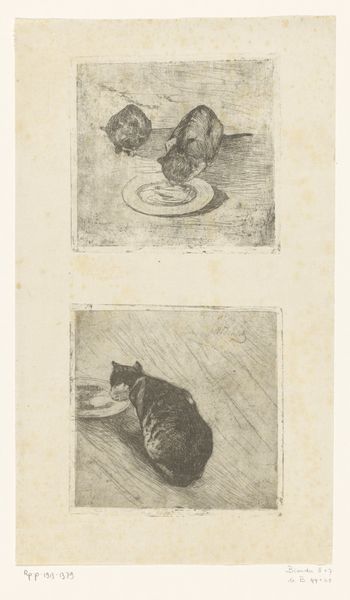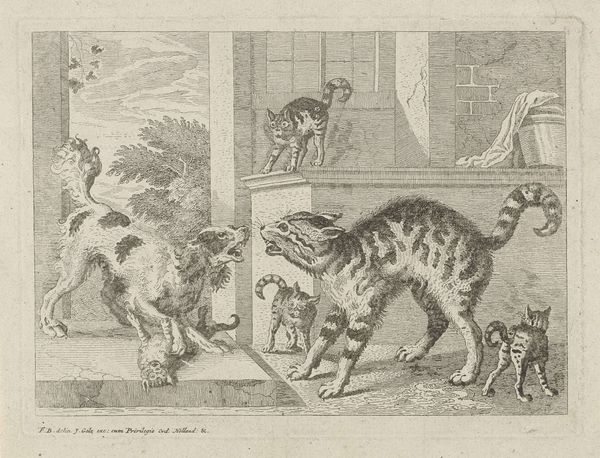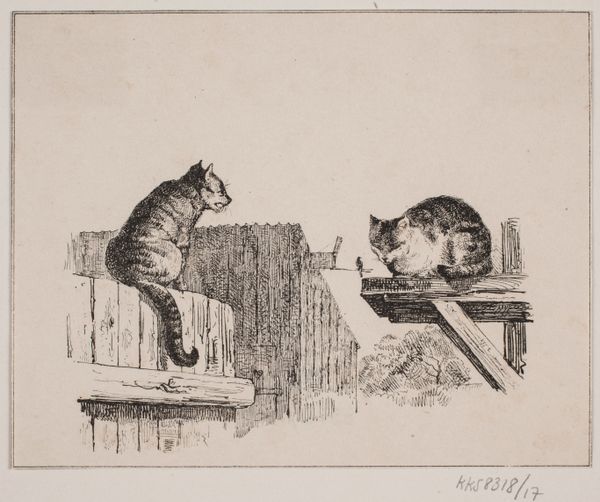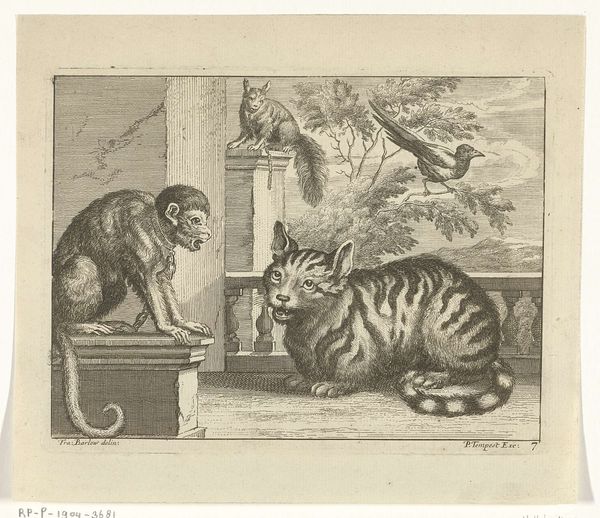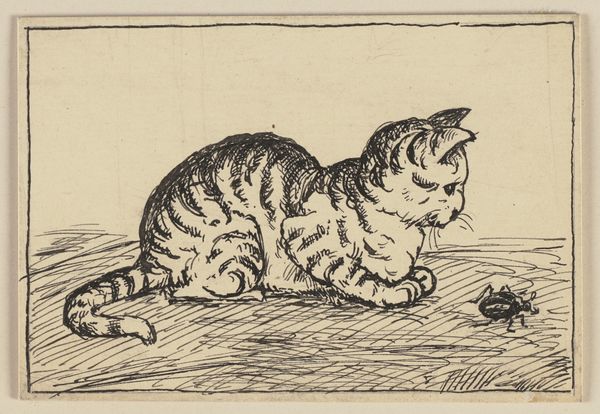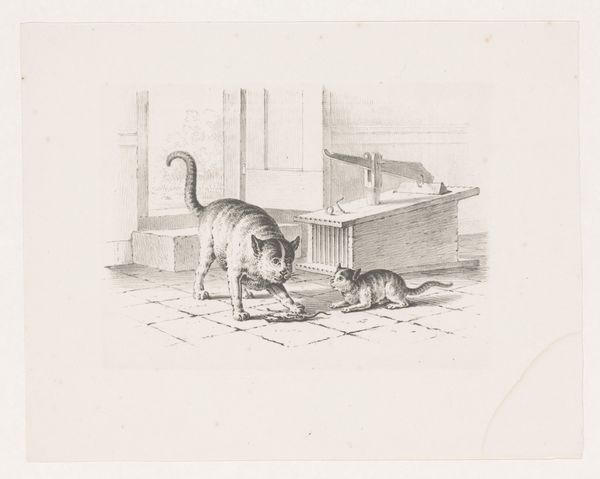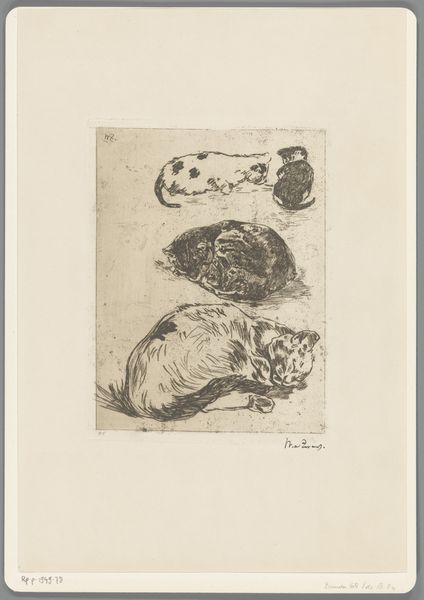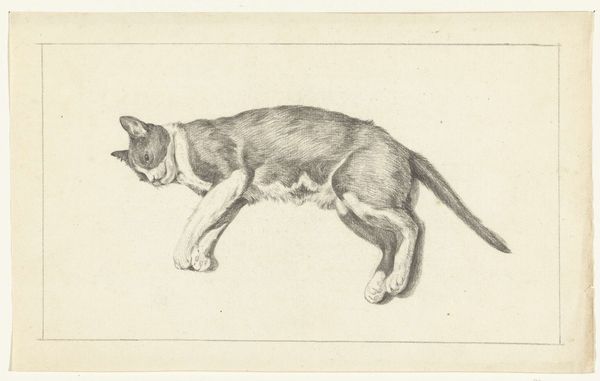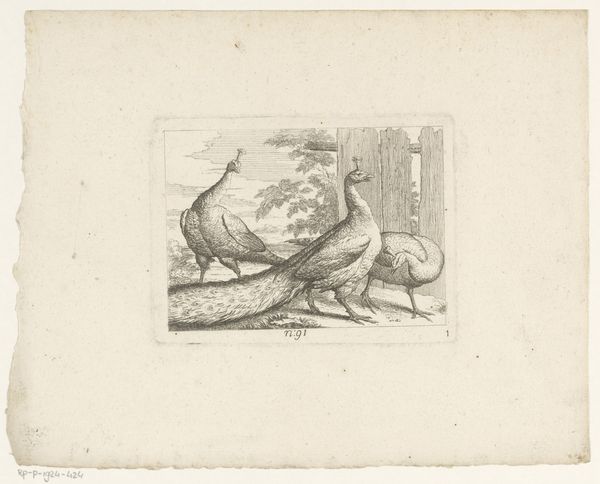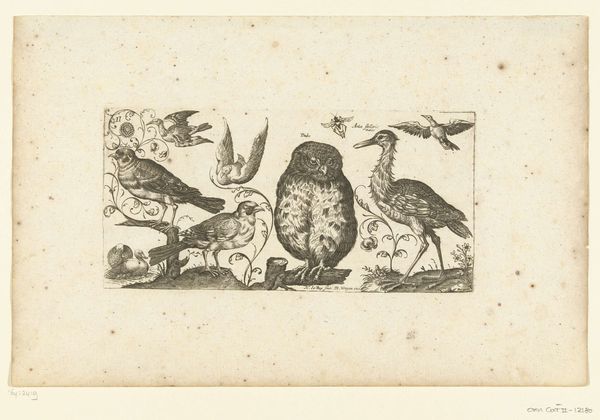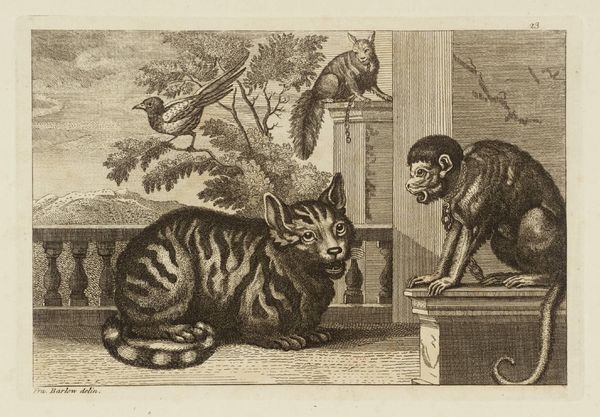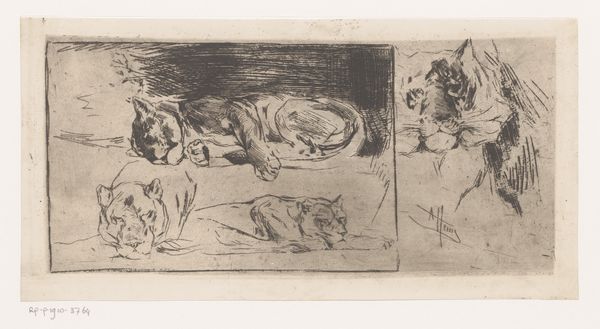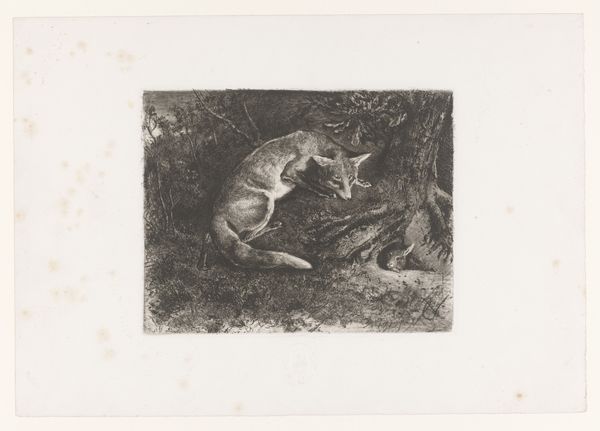
print, engraving
#
baroque
#
animal
# print
#
engraving
Dimensions: height 96 mm, width 139 mm, height 98 mm, width 137 mm
Copyright: Rijks Museum: Open Domain
Curator: What stands out to you about this print, Editor? Editor: This is "Deformed Geese and a Cat" by Antonio Tempesta, created before 1650. It's an engraving, which feels interesting since we see the starkness of the animals and the plain backgrounds. It makes me wonder why Tempesta grouped these creatures in this way. What's your take? Curator: As a materialist, my gaze is drawn to the *process* here. Engraving, as a printmaking method, involved intense labor, using specialized tools to incise lines into a metal plate. Each line, each curve, demanded skilled hands. Now, consider who would have consumed these images? And under what circumstances would they encounter it? Editor: So, it's less about what the animals *mean* and more about how this image was manufactured and circulated. But what’s compelling about showing a cat and geese together using this technique? Was it common to group animals in this manner? Curator: These images speak to a culture deeply involved with the natural world, even as that world was being reshaped by human activity. This image offered viewers a mediated experience, allowing them to study and reflect on nature from a safe remove. Think about the availability of paper, the price of a print versus, say, the cost of keeping geese. Consider too the knowledge about animal anatomy required to produce accurate representations, combined with, according to the title, deformed aspects. How does the image inform or challenge the social or material conventions around how images were made at the time? Editor: I hadn't considered that access to even common animals would be different. I suppose these prints democratized that access to some degree, although limited by the economics of print ownership. I will consider the audience and manufacturing implications now as I view all Baroque prints. Curator: Exactly! The act of creating this print wasn’t just about aesthetics, but the complex social, economic, and material relations. Always remember that material reality informs the image's meaning and significance.
Comments
No comments
Be the first to comment and join the conversation on the ultimate creative platform.
